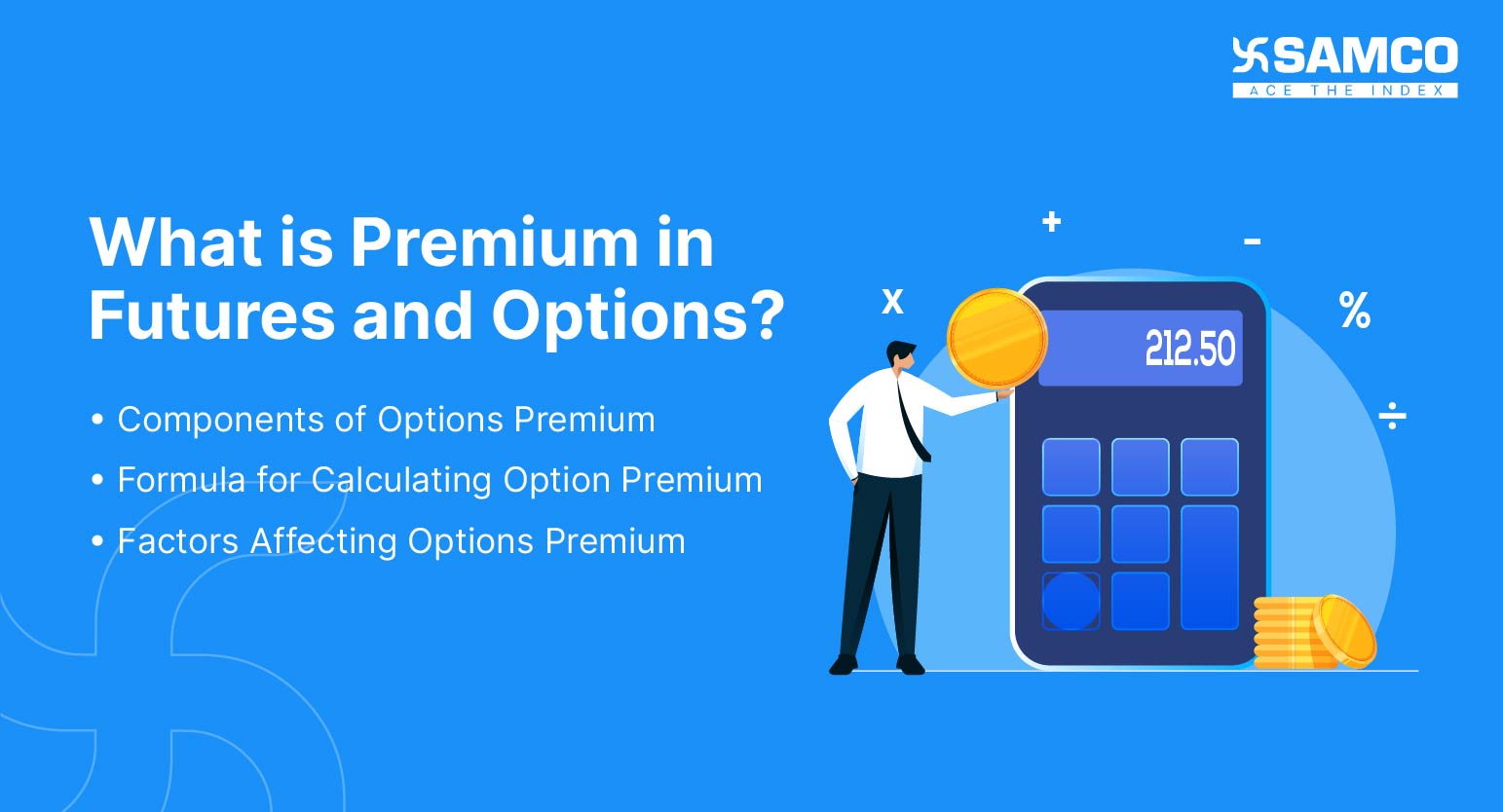In this article, we will discuss
- Components of Options Premium
- Formula for Calculating Option Premium
- Factors Affecting Options Premium
- Difference Between Futures and Options
- Differences in trading and settlement
- Premium calculation for futures and options
 In futures and options trading, the term "premium" refers to the price that traders pay for the right to purchase or sell an underlying asset at a predetermined price, known as the strike price. The premium is a crucial concept in these financial instruments because it represents the cost of entering into a position and therefore directly affects the potential profitability of the trade. It is crucial to first understand the fundamentals of futures and options trading in order to comprehend the premium. Options provide the buyer the right, but not the responsibility, to sell or buy the asset at a set price and time, whereas futures are contracts that bind the buyer to acquire an underlying asset at a specific price and time in the future. In both situations, traders must pay a premium to enter the contract, which stands in for the trade's potential gain or loss.
Options trading strategies successfully require an understanding of the premium. Traders must take the premium into account when calculating whether a transaction is profitable because it is the cost of taking a position.They must also keep a careful eye on the premium because it might change depending on the state of the market and other variables, such as shifts in interest rates or geopolitical events.
In futures and options trading, the term "premium" refers to the price that traders pay for the right to purchase or sell an underlying asset at a predetermined price, known as the strike price. The premium is a crucial concept in these financial instruments because it represents the cost of entering into a position and therefore directly affects the potential profitability of the trade. It is crucial to first understand the fundamentals of futures and options trading in order to comprehend the premium. Options provide the buyer the right, but not the responsibility, to sell or buy the asset at a set price and time, whereas futures are contracts that bind the buyer to acquire an underlying asset at a specific price and time in the future. In both situations, traders must pay a premium to enter the contract, which stands in for the trade's potential gain or loss.
Options trading strategies successfully require an understanding of the premium. Traders must take the premium into account when calculating whether a transaction is profitable because it is the cost of taking a position.They must also keep a careful eye on the premium because it might change depending on the state of the market and other variables, such as shifts in interest rates or geopolitical events.
Components of Options Premium
The price an option buyer pays an option seller in exchange for the right, but not the duty, to purchase or sell an underlying asset at a defined price and time is known as the options premium. The price of an option is influenced by a number of variables, including the underlying asset's current value, the amount of time left before it expires, and the projected volatility of its price. The intrinsic value, time value, and volatility value are the three basic parts that make up the option premium.-
Intrinsic Value
-
Time Value
-
Volatility Value
Formula for Calculating Option Premium
The formula for calculating option premium takes into account the three main components of an option's price: intrinsic value, time value, and volatility value. The basic formula for calculating the price of an option is: Option Premium = Intrinsic Value + Time Value + Volatility Value The intrinsic value is calculated by subtracting the strike price from the current market price of the underlying asset. The time value and volatility value are more complex to calculate and are usually estimated using options pricing models such as the Black-Scholes model.Factors Affecting Options Premium
-
Price volatility of the underlying asset
-
Time to expiration
-
Interest rates
-
Dividend payments
Difference Between Futures and Options
Futures and options are two popular financial derivatives that offer investors opportunities to speculate on price movements and manage risk. While both futures and options have similarities, such as the ability to trade on exchanges and the use of underlying assets, they differ in several important ways as follows:-
Definition of futures and options



 Easy & quick
Easy & quick
Leave A Comment?